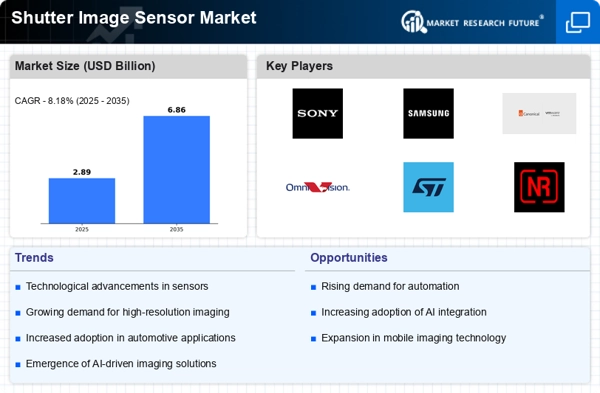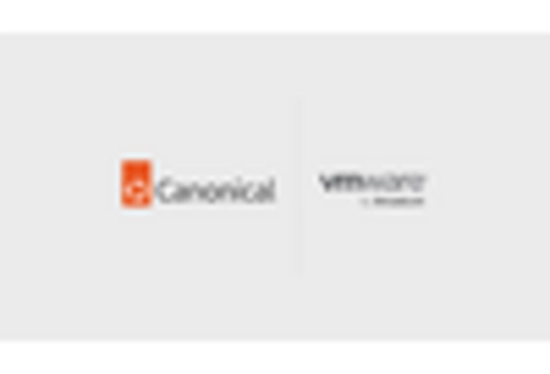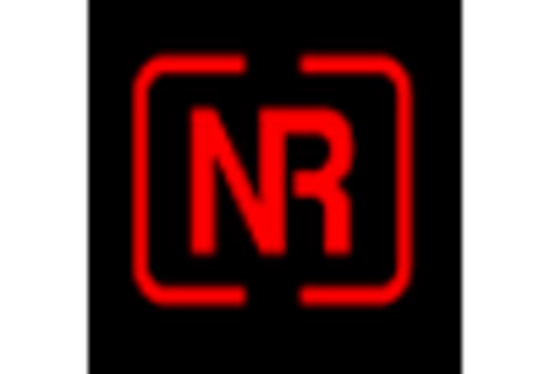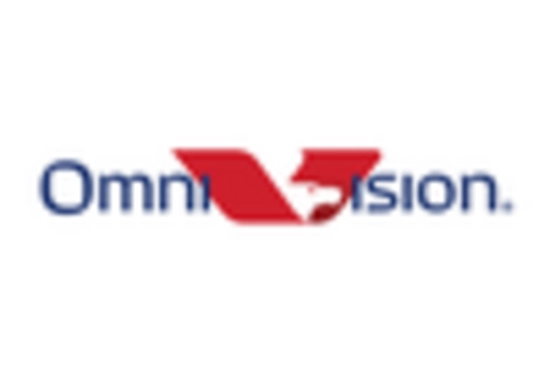The Shutter Image Sensor Market is currently characterized by a dynamic competitive landscape, driven by rapid technological advancements and increasing demand for high-quality imaging solutions across various sectors, including consumer electronics, automotive, and healthcare. Major players such as Sony (Japan), Samsung (South Korea), and Canon (Japan) are at the forefront, each adopting distinct strategies to enhance their market positioning. Sony (Japan) continues to lead in innovation, focusing on high-performance sensors for smartphones and professional cameras, while Samsung (South Korea) emphasizes vertical integration and supply chain optimization to bolster its production capabilities. Canon (Japan), on the other hand, is investing heavily in research and development to expand its portfolio of imaging technologies, particularly in the realm of mirrorless cameras, thereby shaping a competitive environment that prioritizes technological superiority and product differentiation.
The business tactics employed by these key players reflect a moderately fragmented market structure, where localized manufacturing and supply chain optimization are pivotal. Companies are increasingly localizing their production to mitigate risks associated with global supply chain disruptions, which has become a critical focus in recent years. This strategy not only enhances operational efficiency but also allows for quicker response times to market demands. The collective influence of these major players fosters a competitive atmosphere where innovation and strategic partnerships are essential for maintaining market share.
In August 2025, Sony (Japan) announced the launch of its latest image sensor, which boasts enhanced low-light performance and faster readout speeds, catering to the growing demand for high-quality imaging in mobile devices. This strategic move underscores Sony's commitment to maintaining its leadership position in the market by continuously pushing the boundaries of sensor technology. The introduction of this sensor is likely to solidify Sony's competitive edge, particularly in the smartphone segment, where consumers increasingly prioritize camera quality.
In September 2025, Samsung (South Korea) revealed its plans to expand its semiconductor manufacturing facilities in response to the surging demand for image sensors. This expansion is expected to enhance Samsung's production capacity and reduce lead times, thereby strengthening its competitive position in the market. By investing in its manufacturing capabilities, Samsung aims to not only meet current demand but also prepare for future growth opportunities in the imaging sector, particularly as the integration of AI in imaging technology becomes more prevalent.
In July 2025, Canon (Japan) entered into a strategic partnership with a leading AI technology firm to develop advanced imaging solutions that leverage artificial intelligence. This collaboration is poised to enhance Canon's product offerings, particularly in the realm of smart cameras and imaging systems. By integrating AI capabilities, Canon aims to differentiate its products in a crowded market, potentially attracting a new customer base that values intelligent imaging solutions.
As of October 2025, the Shutter Image Sensor Market is witnessing a shift towards digitalization, sustainability, and AI integration, which are defining the current competitive trends. Strategic alliances are increasingly shaping the landscape, enabling companies to pool resources and expertise to drive innovation. Looking ahead, competitive differentiation is likely to evolve from traditional price-based competition to a focus on technological innovation, reliability in supply chains, and the ability to deliver sustainable solutions. This transition suggests that companies that prioritize R&D and strategic partnerships will be better positioned to thrive in the evolving market.

















Leave a Comment